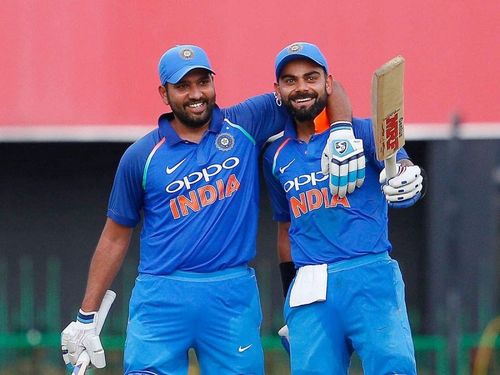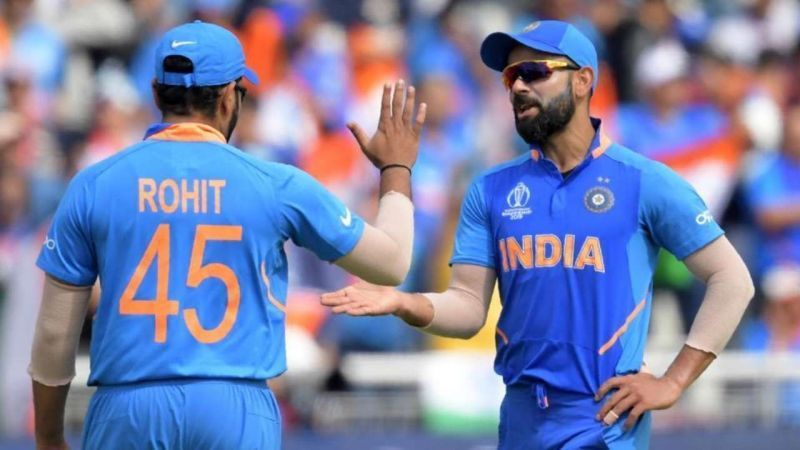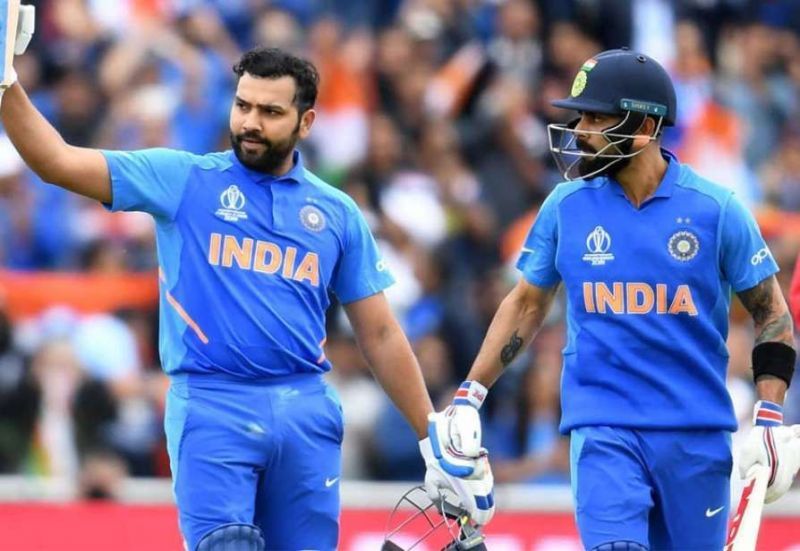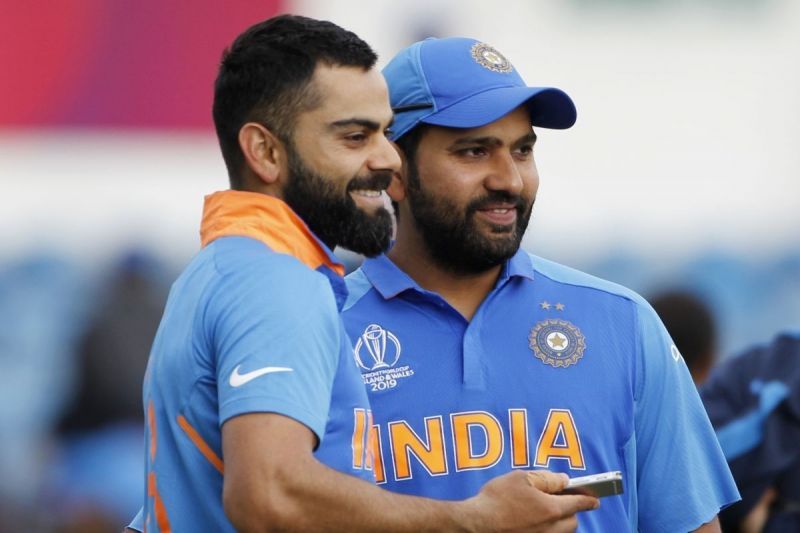
Split Captaincy in Indian cricket: An idea whose time has come

Split captaincy in Indian cricket? No way. This is not at all workable in our setup. Yes, there have been phases in Indian cricket when we have had separate captains for the Test team and limited overs team.
Initially, when MS Dhoni was the captain of the T20 and ODI squad, Anil Kumble was the skipper of the Test team. And, in the latter phase of his career, when MS Dhoni continued to lead the limited overs side, Virat Kohli captained the Test side.
But these were transition phases where MS Dhoni and Virat Kohli were being groomed for the larger role ahead. If we go for split captaincy, will it create two different power centres? Whenever the idea of split captaincy has been tossed up, it has been nipped in the bud with this line of argument.
In life and sports, we need to be prepared to embrace change, for change is the only constant in life.
Wasn't the idea of a foreign coach training our national cricket team unthinkable at one point of time? Were there not many former cricketers and BCCI officials who were unwilling to embrace T20 cricket? Was India not the reluctant participant in the inaugural T20 World Cup in South Africa?
Was the IPL, with all its paraphernalia like the auction and the cheerleaders supposed to have led to crash commercialisation of Indian cricket? But the league not only benefited Indian cricket in terms of talent and exposure - it is also India’s prime sports property in the global sporting arena.
Were Test openers not supposed to safely see through the new red ball and the fresh wicket? But one Virender Sehwag changed the entire perception.
Were wicket keepers ever considered to be serious captaincy material? A certain MSD went on to become one of the game's greatest leaders. So change is the only constant factor.
Considering the fact that cricket is played in three different formats and the demands in international cricket are going to multiply in the years ahead, split captaincy is an idea which has to be embraced sooner or latter. Why not to embrace it as a well thought out move?
Why do India need separate captains for Test and limited overs cricket?

Firstly, cricket is one game where India can rightfully aspire to be the dominant power. The BCCI, being the richest cricket board in the world by far, has got a domineering say in world cricket. In the Indian Premier League, India has got the best international property in the game. The league and the resultant ecosystem have provided us with immense talent in terms of bench strength and provided them with unmatched exposure.
The Indian cricketing establishment is run professionally, with the players and support staff working at different levels to get the best in terms of learning and other facilities. So why can’t we aspire to be as dominating as West Indies and Australia were in different conditions in their prime?
Secondly, the Indian team has been making incremental progress under various leaders over the years. In the modern era, if the leadership of Sunil Gavaskar gave us the professional edge and Kapil Dev ‘the never say die’ attitude.
Sourav Ganguly came across as the thought leader of our times who gave Indian cricket the self belief to compete with the best and challenge others in their conditions. Building further on this solid base, MS Dhoni took Indian cricket to glorious heights, more so in limited overs cricket. Like Border-Taylor-Waugh and then the Ponting era in Australian cricket, Indian cricket too aspires to get to the next level.
Thirdly, Virat Kohli has been the captain of the Indian Test cricket team for almost 6 years now and in all forms of the game for the last three years. In Ravi Shastri, the Indian captain has the head coach of his choice, and the selection committee has largely provided him the team of his choice. In international cricket, this is reasonably fair time and conditions to assess the leader and do some correction if required.
Amid the backdrop, what will the SWOT analysis of Virat Kohli’s leadership look like?

What are the strengths?
Kohli's leadership strength lies in his ability to groom a battery of pacers, who as a collective force are the best in the world. Even in Indian conditions, India no more rely solely on their spinners, as was the case not very long ago.
Leading from the front, Kohli has lifted the fitness standards of the team comparable to the best in any professional sports, let alone cricket. As the leader and the player he has got the unique ability to give more than hundred percent in each and every ball bowled throughout the match.
What are the weaknesses?
Though the team has been ruthless in terms of winning percentage in home conditions, they have been found wanting in the challenging overseas conditions. Under Kohli's captaincy, India have lost series in England, New Zealand and South Africa.
India defeated Australia in Australia last time, but the Kangaroos were without two of their modern greats in that series - Steve Smith and David Warner. BCCI President and former Indian captain Sourav Ganguly, in an exclusive interview with Sportskeeda, clearly accepted this when he said -
“They have to play well outside, they are not doing that. There’s no hiding. Even when I was captain, I said I will be judged on how good I am is only when I play well away and it remains the same. We will have a word with Virat, Ravi and the boys and help them to play well away."
The Indian team's inability to do well in crunch matches of ICC tournaments raises some valid questions. Following the 2013 Champions Trophy, India have reached the knockout stages of all the ICC events since. They were eliminated in the semi finals of the last two World Cups, ended runners-up in the 2014 T20 World Cup and 2017 Champions Trophy, and bowed out of the semi finals of the 2016 T20 World Cup in India.
The majority of defeats have come under the leadership of Virat Kohli. As former England captain, commentator and one of the brilliant readers of the game, Nasser Hussain questioned -
“I would say selection is where India have gone wrong over ICC Tournaments, adapting to conditions a little bit. So it’s not just about having one game plan. Adapting to conditions, if it’s nibbling around (ball swinging) and if you are in a World Cup semi-finals against New Zealand and it’s doing a bit, where is your middle order if you are 20 for 2 and Virat Kohli and Rohit Sharma are out?"
“It could almost be a fault of Indian cricket that they are too good at the top of the order. When it’s good and flat, okay Kohli hundred, Sharma hundred, hundreds at the top and lads in the middle don’t get a hit," he added.
He then goes on to explain the importance of having a Plan B when Plan A fails to get them across the line.
But is this not something which the team management and selectors have known for a long time? Then why does the inertia continue? Every era comes out with a set of its own problems.
In the Sourav Ganguly-John Wright period too, India had their fair share of problems. India were losing in the finals of the key tournaments, the batting order with Sourav Ganguly and Sachin Tendulkar were top heavy, with relative inexperience lower down the order and the lack of genuine all rounder impacting the combination of the team.
It was then that Sachin Tendulkar and Sourav Ganguly had to bat down the order, and Rahul Dravid was asked to keep wickets, so that India could play with seven batters. Unfortunately, in the Virat Kohli-Ravi Shastri era, similar efforts to work out a solution has been lacking and the inertia has continued for far too long.
Reflecting on the captaincy style of Virat Kohli, Nasser Hussain had an interesting take:
“So, he’s his own man, he has got better at certain things or still certain areas I would like to see Kohli improve on. I call him the ‘tinker man’. Every over, you have to change the field, he is running up changing things, he tinkers a little bit too much. Selection- I know people say what is that got to do with Kohli, but you got to have a selection plan. I think India did a lot of things well, but I am not sure selection is one of them."
Clearly, here the sharp cricketing brain in Nasser Hussain has laid threadbare where the actual problem lies. Virat Kohli's captaincy style is being hands-on with the situation every ball. The question then is - being so engrossed with the micro situation, has the leader in him and the team management lost sight of the larger macro issues overall?
In one of the press conferences ahead of an ODI match in a long series versus New Zealand early this year, the Indian captain talked about T20 matches being the priority, with this being the T20 World Cup year. Is it not inhuman to expect so much attention to detail from someone over all the formats of the game day in and day out?
What should be the way ahead?

The Indian skipper, in one of his interviews, has made his intent clear on leading the country in all formats of the game till World Cup 2023 at least. Sourav Ganguly, the present BCCI president, is also believed to not be in the favour of split captaincy.
But despite all this, split captaincy is the only way forward. Virat Kohli should be leading the Test team and Rohit Sharma should captain the One-Day International and T20 squads. Why?
Firstly, Virat Kohli, with his unmatched passion, will be able to focus all his energies on the Test cricket. He can work on improving the overseas record of the team in the challenging situations of Australia, England, New Zealand, and South Africa. If he is able to do this, he can go down as India’s tallest leader in the history of the game.
Secondly, Virat Kohli, being the modern great of the game, leading the Test side will be a great statement and advertisement for Test cricket, which is the real cricket for the connoisseurs of the game.
Thirdly, this will allow him to focus solely on his game in limited overs cricket, where he’s a once in a generation player.
Fourthly, this will prolong his career. As Tom Moody said in one of his recent interviews -
"With India’s example, which is probably the most high profile example, the only reason I would prefer split captaincy there is purely to preserve the longevity of Virat Kohli. Virat Kohli is a superstar, we all know that. And he is an absolute delight to watch, to compete, as a captain and as a batsman."
"But if you took the white ball captaincy away from him, for instance, the question is can we have this special talent for longer? Because the role of the captain in three formats in any country is a significant role, but in India, it’s another league."
"I would be concerned that if Kohli maintains all the three captaincy roles, are we loosing two three years of international cricket from one of the game’s greatest ever players?" he added.
Indian cricket is fortunate to have Virat Kohli and Rohit Sharma together in one era. Let us make the most out of it.
Rohit Sharma has made his mark as Mumbai Indians' captain. He has been successful with two second-string sides in Asia Cup 2016, preceded by the Nidahas Trophy. He has an excellent win percentage whenever he has led the side in absence of Virat Kohli.
Indian cricket has graduated from the age of divisions, lobby, and dissensions. Players are far more secure and professional now. If there are any glitches left, it’s high time we iron them out. In Kohli and Sharma we have two seasoned campaigners with a fair bit of understanding between them, having played together for years now.
Post lockdown, due to commercial aspects, the calendar of international cricket will be more hectic and demanding. With two T20 World Cups and one 50-over World Cup likely in the next three years, split captaincy is definitely an idea whose time has come in Indian cricket.